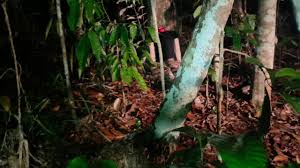
when Horror Yearbook – Is Kuyang a Human? This question often stirs curiosity and fear among those who have grown up hearing eerie stories of floating female heads with trailing organs. In Indonesian folklore, particularly in Kalimantan, the figure of Kuyang holds a firm place in the cultural imagination. People believe she is a woman who practices dark magic to gain immortality or supernatural power. These tales describe her as appearing normal during the day but transforming into a terrifying creature at night. Unlike other spirits in Southeast Asian lore, Kuyang is seen as a human who chose her path into darkness. Her dual identity reflects both fascination and fear, symbolizing the dangers of misused knowledge. Whether myth or misunderstood history, the question remains central in local narratives and continues to fuel speculation among researchers, spiritual leaders, and curious minds alike.
The question Is Kuyang a Human? can only be understood by tracing her origins. Folklore tells of women who acquired forbidden knowledge in search of youth or power. These women, through occult rituals, willingly transformed into the Kuyang. Communities feared them because of their ability to hide in plain sight. Villagers often linked unexplained infant deaths or miscarriages to Kuyang attacks. Despite the fear surrounding her, Kuyang represents more than horror. She reflects societal concerns around female autonomy, secrecy, and power. In many rural areas, stories of Kuyang also serve to enforce social norms about womanhood and morality. Elders pass down tales as cautionary lessons to younger generations. The cultural image of Kuyang reinforces values related to motherhood, secrecy, and taboo. These narratives still hold weight, even among modern urban audiences who may no longer believe but continue to share them.
“Read about: Wendigo: The Ice-Hearted Spirit of the Canadian Forests”
In the discussion surrounding Is Kuyang a Human, one must consider her double life. During the day, she appears as a regular woman, often reclusive or mysterious in behavior. Her true nature, however, reveals itself at night. Folklore describes her transformation process as requiring deep concentration and a magical spell. She meditates in solitude and leaves her body in a hidden place. Her head detaches, organs trailing behind, as she flies in search of the blood of newborns or pregnant women. This transformation shocks the imagination yet remains consistent across various accounts. Communities place thorns, mirrors, or spices around cribs to protect against her. While some may argue the Kuyang is a metaphor, others insist she has been spotted and fought off in real life. The duality of her life highlights the tension between what is seen and what is believed, between public identity and hidden truths.
Attempts to answer Is Kuyang a Human have invited both scientific and spiritual perspectives. From a psychological standpoint, some researchers view Kuyang stories as rooted in mass hysteria or sleep paralysis. They argue that hallucinations and fear during nighttime can lead to vivid reports of flying heads. In contrast, spiritual leaders offer different interpretations. In many parts of Indonesia, shamans and dukun still perform rituals to detect and ward off Kuyang. The community regards them as protectors against such dark forces. Some claim to have identified human women suspected of practicing black magic. These women are often marginalized, feeding further into the myth. Even without concrete proof, the collective belief sustains the phenomenon. In academic circles, Kuyang serves as an example of how folklore and lived experience intertwine. Though explanations differ, both science and spirituality recognize the emotional weight these legends carry for local populations.
“Read more: Mini Shorts Meet Biker Boots: The Summer Trend Redefining Street Style”
Even today, the question Is Kuyang a Human echoes through films, social media, and urban legends. Horror movies have revived her image, often portraying her as a terrifying supernatural entity. These portrayals exaggerate her features for dramatic effect, yet they renew interest in the folklore. Online, viral posts and videos claim to capture real Kuyang sightings. Some gain millions of views and trigger public debate. While skepticism grows, fear and fascination persist. Artists and writers reinterpret the Kuyang story to comment on gender roles, fear of the unknown, or resistance to modernization. Schools occasionally ban books or media featuring her image, fearing psychological impact on children. This response shows how powerful her story remains. She transcends time and space, morphing with each generation’s fears and values. Whether viewed as a villain, a victim, or a warning, Kuyang lives on in the national psyche.